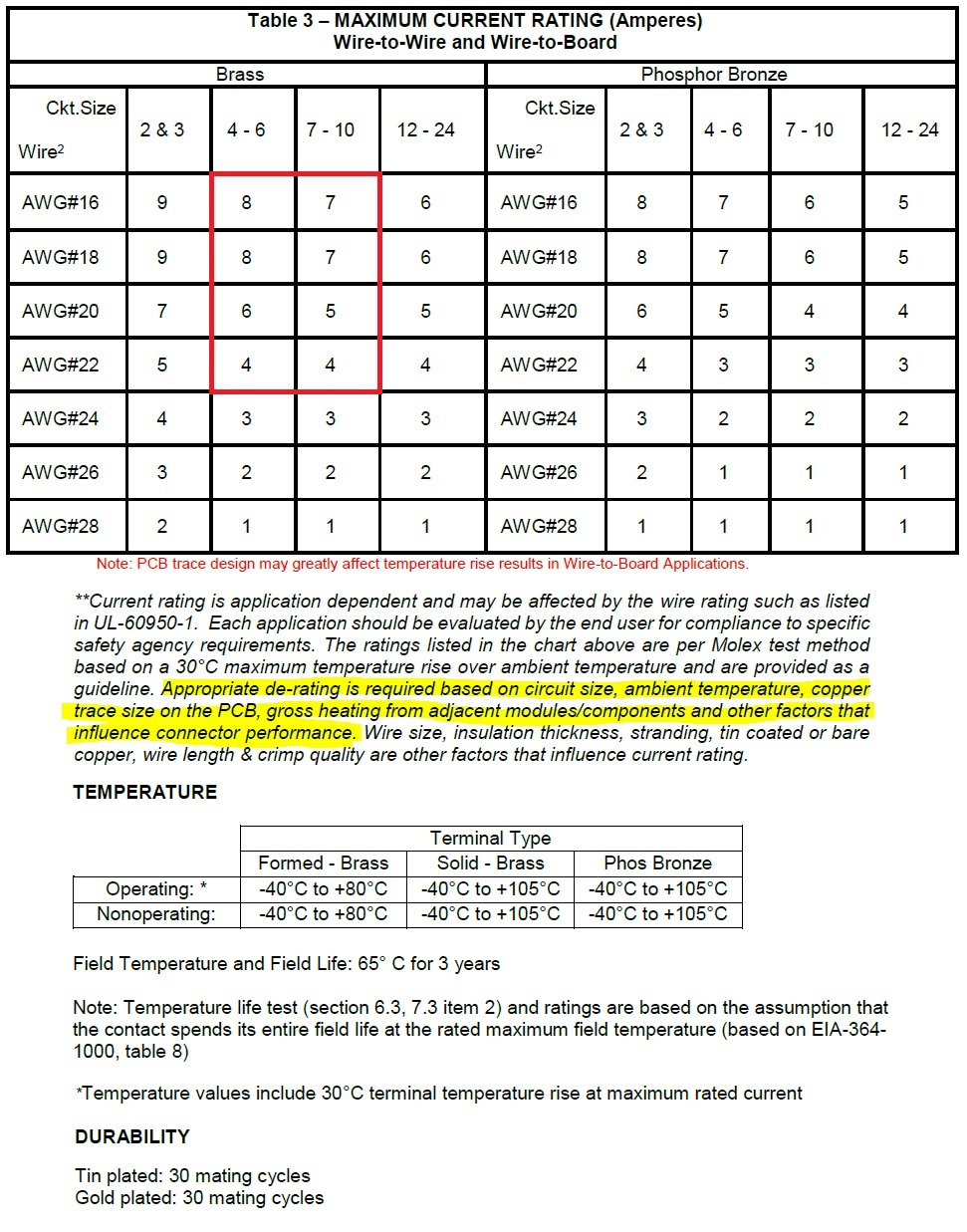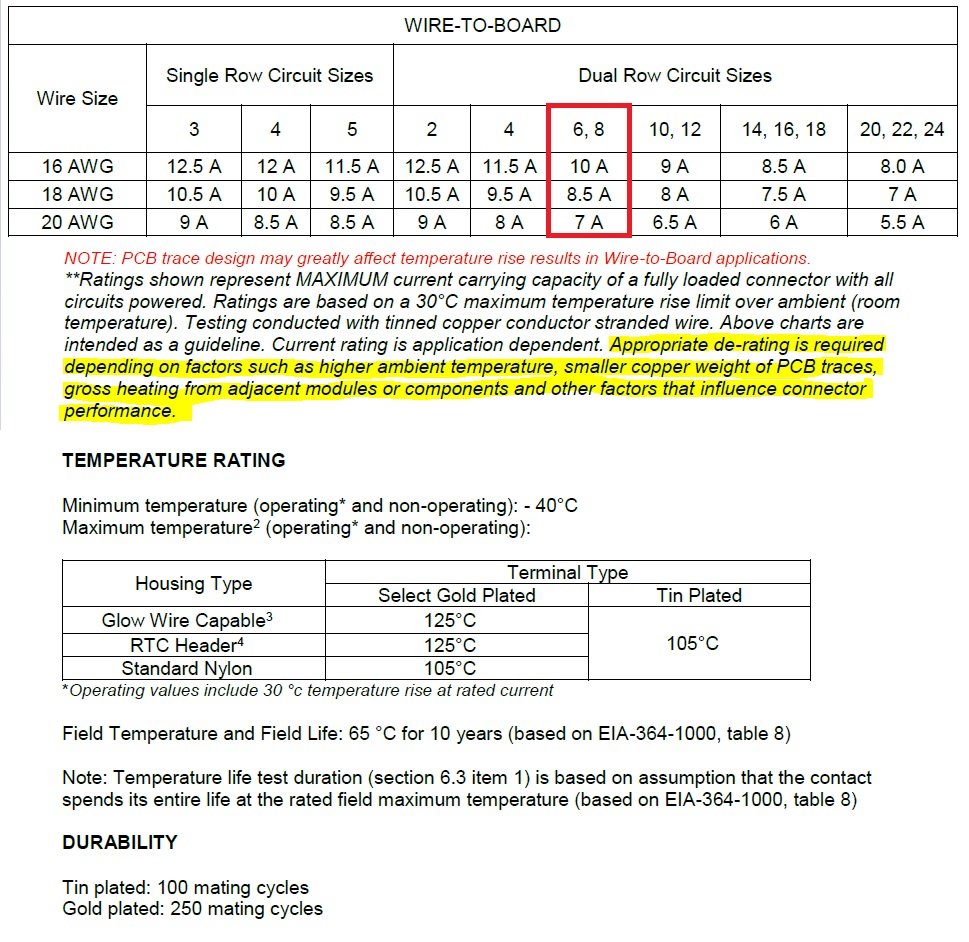In this article, I would like to dispell the myth that "8-pin" PCIe connectors (which only have 6 actual conductors, BTW) are ONLY capable of 150W.
First things first, not a single engineer I know uses "wattage" to define the capability of a conductor. The correct unit of measurement to use is current. Because the voltage can be -5% or +5% and still be within Intel's ATX specification, which gives you a variance in your "wattage" calculation of 10%. For example, 150W with 11.4V (12V -5%) is 13.16A. 150W with 12.6V (12V +5%) is 11.9A.
Now that that's out of the way... let's take a look at the connector specification....
This is an excerpt from the Molex Mini-Fit Jr. specification sheet. As you can see, there is a very wide range of variables that can cause a 6-pin PCIe cable either capable of 24A (16g wire with brass terminals) or only 3A (26 or 28g wire with phosphor bronze terminals). This is why PCI-SIG says that the 6-pin is only capable of 75W. And the 8-pin really isn't an 8-pin since it only has six conductors with the extra two wires simply acting as "sense" wires.

I've circled the most commonly used configuration in red. No reputable PSU company is going to use anything less than 22g and are not going to use phoshor bronze terminals. In fact, the only time I've seen 20 or 22g wire used is when you have a pigtail PCIe connector at the end of a cable.
I also highlighted some of the text from below the table in the spec sheet. This introduces other variables that impact how much power the cable should carry. Circuit size is laid out nicely in the table, but you have to consider the ambient temperature of where the connector is used, heat generated from connectors adjacent to the connector in question and, as I discussed in my other article, the number of PCB layers and weight of the copper used. So, as you can see, given so many variables, you can understand why PCI-SIG would "play it safe" and tell people to only use an "8-pin" PCIe connector for up to "150W".
And, for reference, I've also added the specifications for temperatures and mating cycles. That's right... 30 mating cycles. Imagine that.
Here's how we use the numbers we're provided. "Ckt size" is the number of conductors total. This is important because the more conductors you have, the less each conductor will be able to deliver due to the close proximity of the terminals and thus the lack of ability to dissipate heat. Since an 8-pin PCIe connector has 6 conductors, 3 +12V and 3 ground, we're going to use the numbers under "4-6". Whether we use 16g or 18g, each terminal supports up to 8A. Since half of the conductors are +12V and half are ground, we multiply the 8A by 3. This gives us 24A. If we assume 12V, that gives us a wattage of 288W. Of course, when engineering you want to use worst case scenario, so it's best to multiply 11.4V by 24A for a total of 273.6W.
The following is from the specification document for Mini-Fit Plus HCS. HCS stands for "high current system". The parts use the same 4.2mm pitch as Mini-Fit Jr., so they are mechanically compatible. Meaning, you can plug a male HCS into a female Mini-Fit Jr.
These are the connectors and terminals Corsair uses. It's also highly likely other PSUs use HCS parts as well.

Here, we can see the amount of current the terminals are capable of is much higher. I've once again highlighted the part that talks about the other environmental variables that can impact the connector's performance.
Also, note that the "field life" is longer with HCS terminals versus Mini-Fit Jr. and the number of mating cycles is increased from 30 to 100.
If we do our math again using 16g HCS parts, we would take 10A, multiple by 3 conductors, for 30A total current. Then multiple by 11.4V. That's 342W.